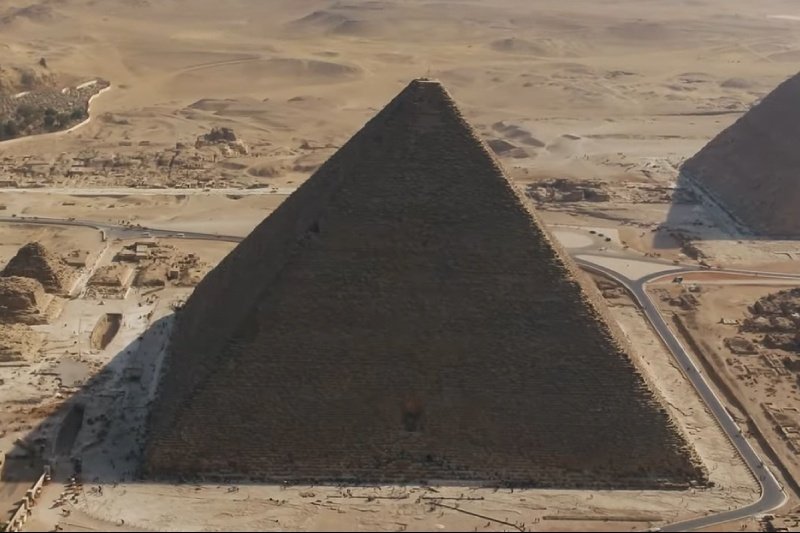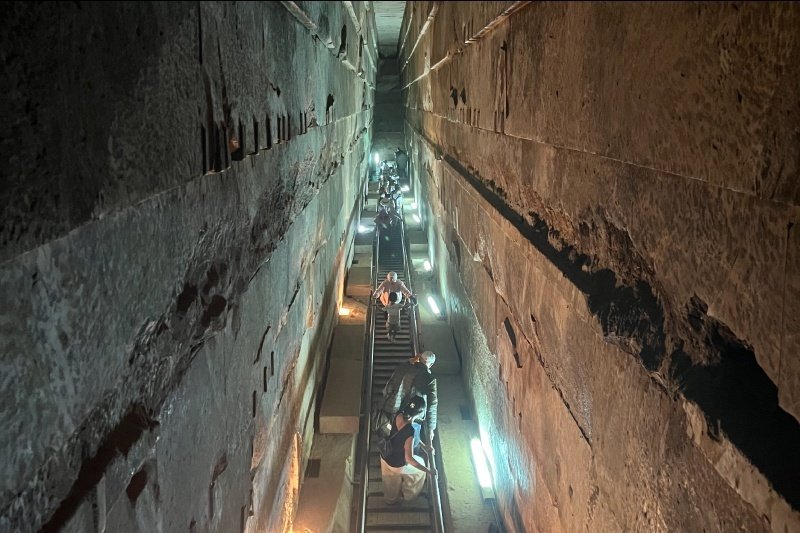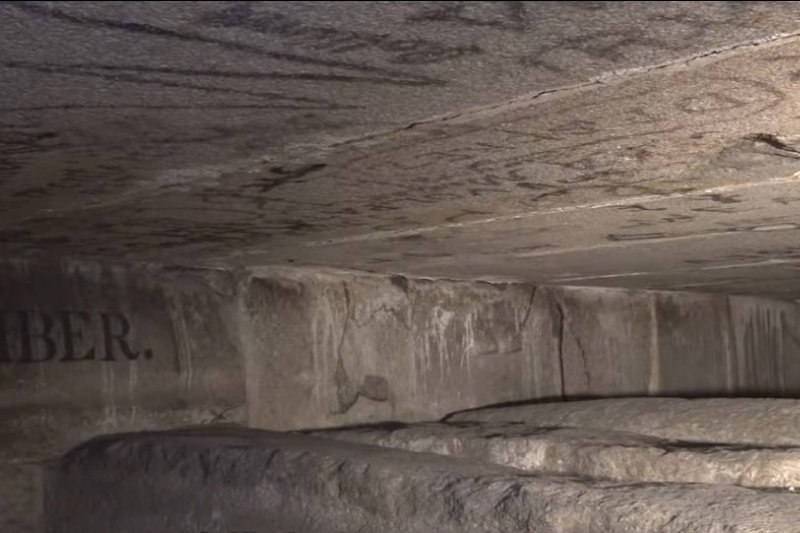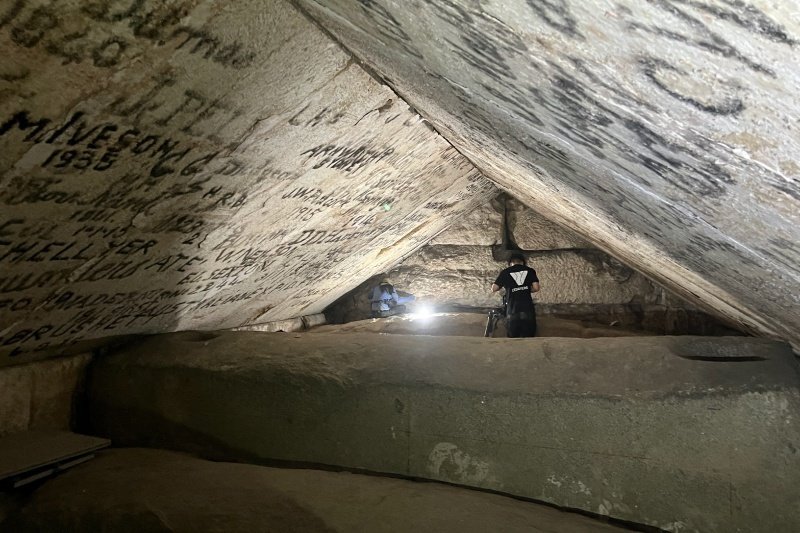
Relieving Chambers - The amazing space inside the Great Pyramid
When ancient Egyptian architects built one of the world's most monumental structures, the Great Pyramid, they created an innovative space within. This space, known as the "Relieving Chambers" is a testament to the ancient wisdom and engineering prowess that came together. In this article, brought to you by the World Scan Project (W.S.P), we delve into the results of our investigation into this remarkable chamber.
Great Pyramid of Giza
Approximately 4,000 years ago, the ancient Egyptians built one of the largest structures in the world, the Great Pyramid of Khufu. It is estimated that more than two million blocks of stone were stacked for a total weight of approximately 5.8 million tons. This magnificent structure is a testament to the incredible engineering skills of ancient Egypt.

The interior of the Great Pyramid is unique compared to other pyramids, with a complex arrangement of rooms and passageways. Among these, the "King's Chamber" is believed to be the final resting place of Pharaoh Khufu. This chamber, located in the heart of the pyramid, houses a large granite sarcophagus. The ceiling beams in this chamber are made of some of the heaviest stones used in the pyramid.


The five-layered space protecting the King's Chamber
One of the most distinctive features of King Khufu's Great Pyramid is the "Relieving Chambers", a unique structure consisting of five stacked chambers culminating in a gabled structure at the top. Above the roof of the King's Chamber are five chambers, named "Davison's Chamber", "Wellington's Chamber", "Nelson's Chamber", "Lady Arbuthnot's Chamber", and "Campbell's Chamber". Positioned approximately 60 to 70 meters above the ground, directly above the King's Chamber, they were presumably intended to safeguard the King's Chamber from the possibility of the roof collapsing under the weight of stone above.


The Discovery of Relieving Chambers
Relieving Chambers were discovered in 1837 by British explorer Howard Vyse. While this discovery was significant, Vyse's excavation methods, which involved blasting through the pyramid's interior with dynamite, caused considerable damage to the site. The remnants of these destructive techniques are still visible today, not only inside the Great Pyramid, but also in the Pyramid of Menkaure.

In recent years, the relieving chambers have been under strict protection by the Egyptian government. As a result, no research institutions or media were allowed access for seven years, from 2015 to 2022. However, in 2022, our World Scan Project (W.S.P.) team received special permission from the Egyptian government to enter the room and successfully conducted a 3D scan.


3D Scanning Survey of Relieving Chambers
Accessing the "Relieving Chambers" through a small opening at the top of the Great Gallery was a challenging undertaking. However, the act of 3D scanning the graffiti and construction marks left by the ancient builders proved to be a crucial step in uncovering the historical and functional significance of this space. The data collected from this 3D scan will enlighten many as it becomes a focal point in future research presentations and is integrated into virtual reality (VR) and metaverse platforms.

Bridging Time and Space: The Mission of 3D Scanning
The primary goal of the World Scan Project's 3D scanning initiative is to preserve the face of archaeological sites for future generations, transcending the limitations of time and place. By leveraging our cutting-edge technology in virtual reality (VR) and the metaverse, we aim to make previously inaccessible sites globally accessible, allowing people everywhere to explore them with ease.
Making the world, the future, and curiosity closer
Our recent investigation into the "Relieving Chambers" was an important step in our ambitious mission. We are committed to continuing our exploration and scanning of heritage sites around the world and preserving them as digital archives. These efforts will ensure that our common human heritage is passed on into the future. We invite you to follow the activities of the World Scan Project and join us on our journey.
Please also check out this video about Relieving Chambers.
この記事が気に入ったらサポートをしてみませんか?
